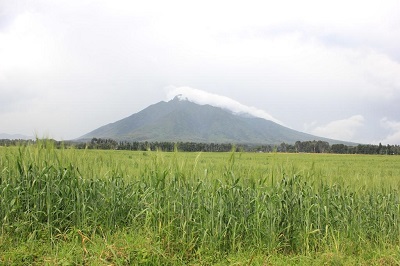
The paper describes how wheat-based foods make up a major portion of total global calories, proteins and micronutrients that support growth and development. It argues that both whole- and refined-grain wheat products contribute to healthy nutrition globally.
Wheat is grown in nearly every region of the world and represents a main source of food and income for millions of smallholder farmers. The authors say wheat-based foods are therefore critical for food security and nutritional security worldwide.
The authors draw attention to the predicted upcoming food crisis, as populations in developing countries expand rapidly, especially in Africa and South Asia. They note that population growth is likely to outpace yield gains in wheat and call for larger investments in wheat and other cereal crops to keep pace with future demand.
The task of feeding 9.2 billion people by 2050 is daunting, but breeding has met this challenge before, during the green revolution. Hans Braun, head of the global wheat program at the International Maize and Wheat Improvement Center (CIMMYT) is calling for a “new green revolution” to meet this new challenge.
Braun described a required 1.2 percent yield gain per year and said this is higher than the recent global average. However, promising programs, such as the durum wheat program at CIMMYT have achieved this goal consistently over the last several decades. The CIMMYT durum wheat program has achieved 3.4 percent yield gain per year over the last 43 years, over double the required gain over the next 30 years.
Check out the full article: CIMMYT Series on Carbohydrates, Wheat, Grains, and Health: Wheat-Based Foods: Their Global and Regional Importance in the Food Supply, Nutrition, and Health. 2017. Peña-Bautista, R. J., Hernandez-Espinosa, N., Jones, J. M., Guzman, C., Braun, H. J., in Cereal Foods World and check out other recent publication by CIMMYT staff below:
- A ladder within a ladder : understanding the factors influencing a household’s domestic use of electricity in four African countries. 2017. Dil Bahadur Rahut, Behera, B., Ali, A., Marenya, P. In: Energy Economics v. 66, p. 167-181.
- Conservation agriculture in the indogenetic plains of India : past, present and future. 2017. Hobbs, P., Gupta, R.K., Jat, R.K., Malik, R.K. In: Experimental Agriculture v. 10, no. 11:14, p. 1-19.
- Gene action controlling normalized difference vegetation index in crosses of elite maize (Zea mays L.) inbred lines. 2017. Adebayo, M. A., Menkir, A., Hearne, S., Kolawole, A. O. In: Cereal Research Communications v. 45, no. 4, p. 675–686.
- Genetic gains in grain yield of a maize population improved through marker assisted recurrent selection under stress and non-stress conditions in West Africa. 2017. Abdulmalik, R.O., Menkir, A., Meseka, S., Unachukwu, N., Ado, S., Olarewaju, J.D., Aba, D.A., Hearne, S., Crossa, J., Gedil, M. In: Frontiers in Plant Science no. 8:841.
- Heat stress and yield stability of wheat genotypes under different sowing dates across agro-ecosystems in India. Jat, R.K., Singh, P., Jat, M.L., Dia, M., Sidhu, H.S., Jat, S.L., Bijarniya, D., Jat, H. S., Parihar, C.M., Kumar, U., Lopez-Ridaura, S. In: Field Crops Research v. 218, p. 33-50.
- Influence of crop establishment methods on yield, economics and water productivity of rice cultivars under upland and lowland production ecologies of Eastern Indo-Gangetic Plains. 2017. Rishi Raj, Kumar, A., Solanki, I.S., Dhar, S., Dass, A., Kumar Gupta, A., Kumar, V., Singh, C.B., Jat, R.K., Pandey, U.C. In: Paddy and Water Environment v. 15, no. 4, p. 861–877.
- The goat grass genome’s role in wheat improvement. 2018. Rasheed, A., Ogbonnaya, F.C., Lagudah, E.S., Appels, R., He Zhonghu. In: Nature Plants v. 4, p. 56-58.
- Use of remote sensing in the assessment of resistance of maize to tar spot complex. (2017). Rodrigues Jr, F.A., Defourny, P., Gérard, B., San Vicente, F., Loladze, A. In: Proceedings of the 11th European Conference on Precision Agriculture, Advances in Animal Bioscience 8(2) pp. 259-263.
- Using satellite data to identify the causes of and potential solutions for yield gaps in India’s Wheat Belt. 2017. Meha Jain, Singh, B., Srivastava, A., Malik, R., McDonald, A., Lobell, D.B. In: Environmental Research Letters v. 12, no. 9, 094011.
- Yield and yield attributes as affected by different sowing dates and different maturity classes cultivar on direct seeded rice. 2017. Dahiya, S., Punia, S.S., Singh, J., Kakraliya, S.K., Singh, B., Jat, H.S., Malik, R. In: Chemical Science Review and Letters v. 6, no. 21, p. 149-152.
